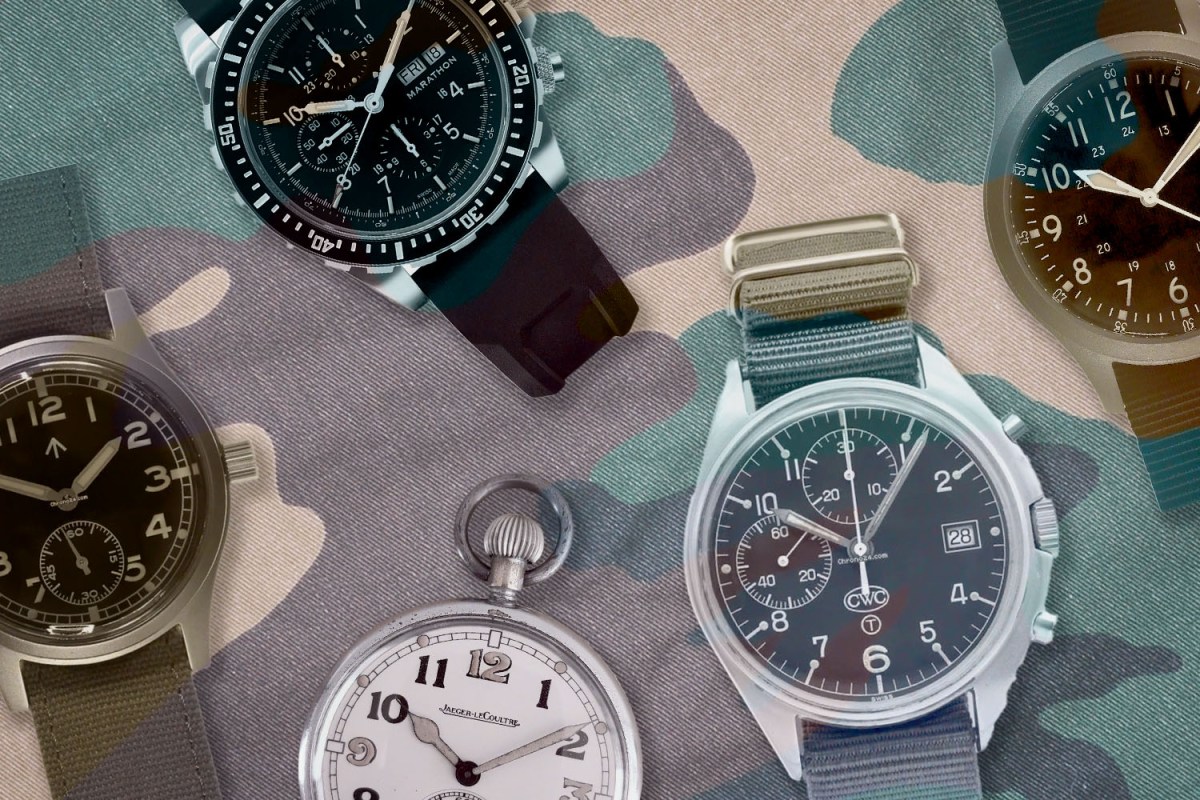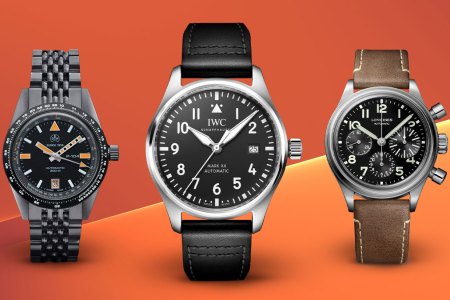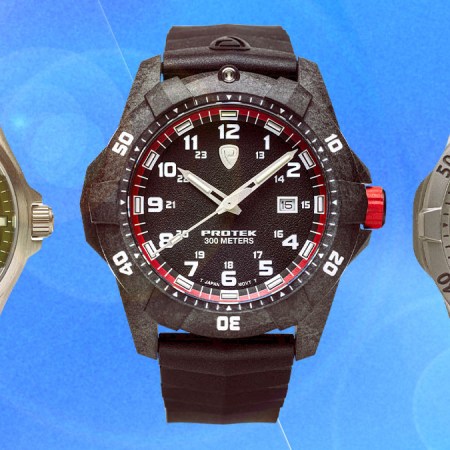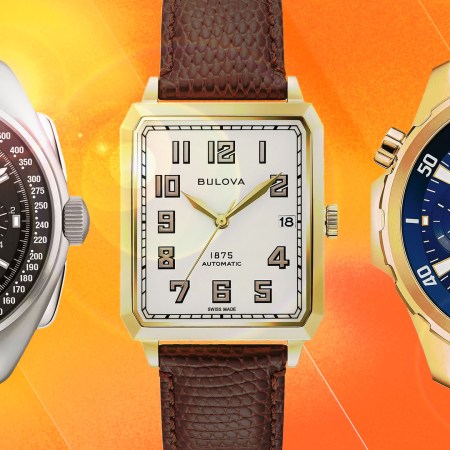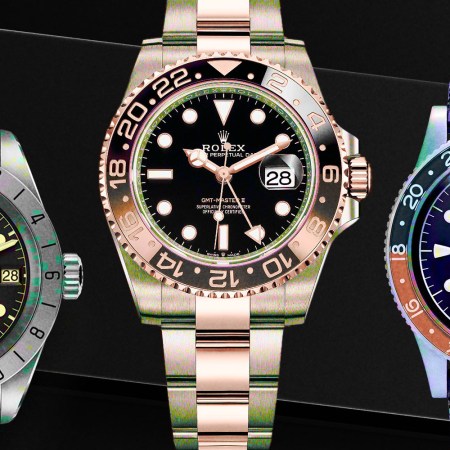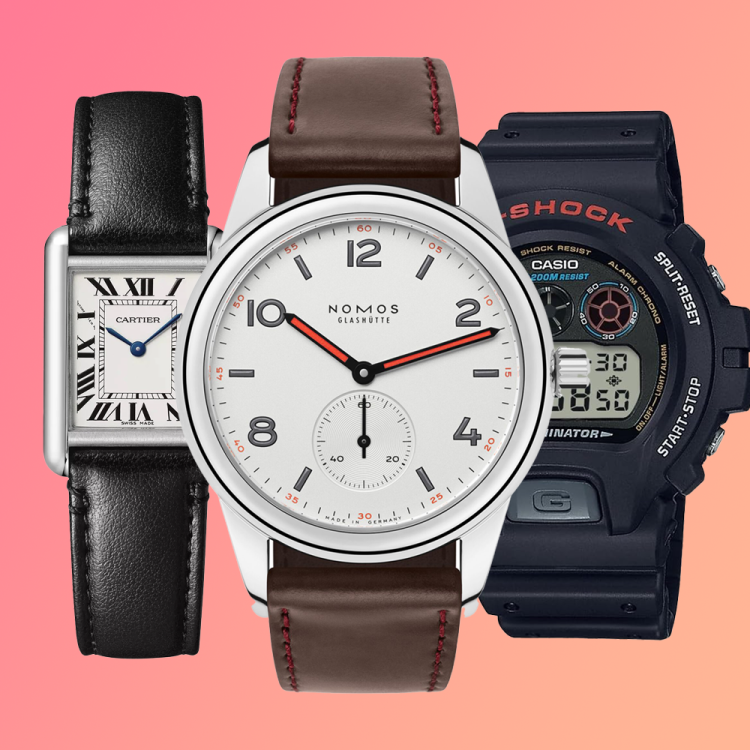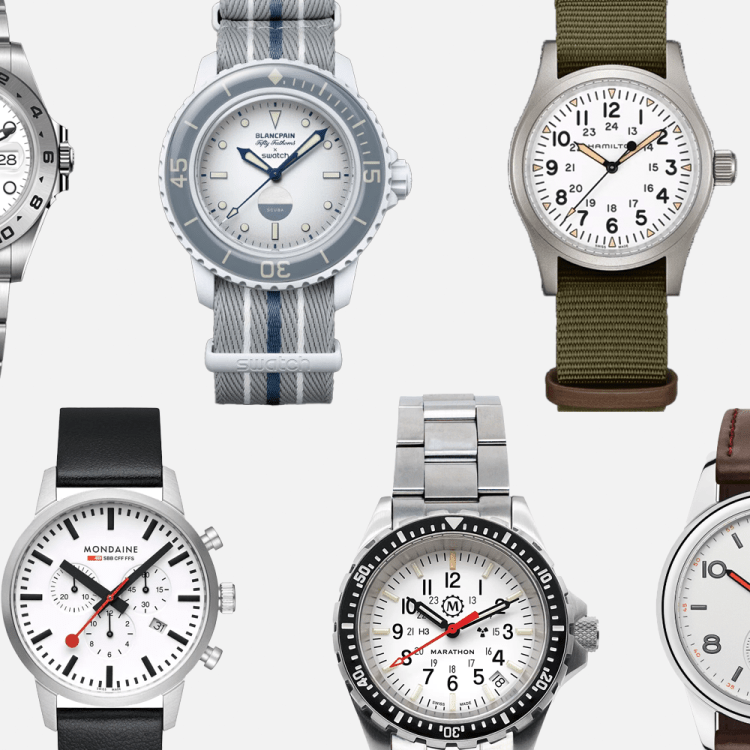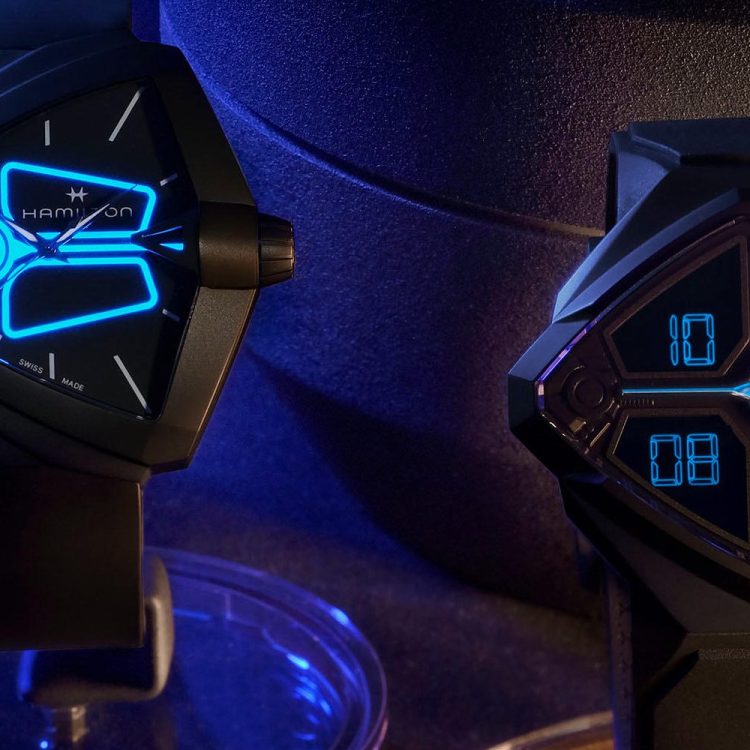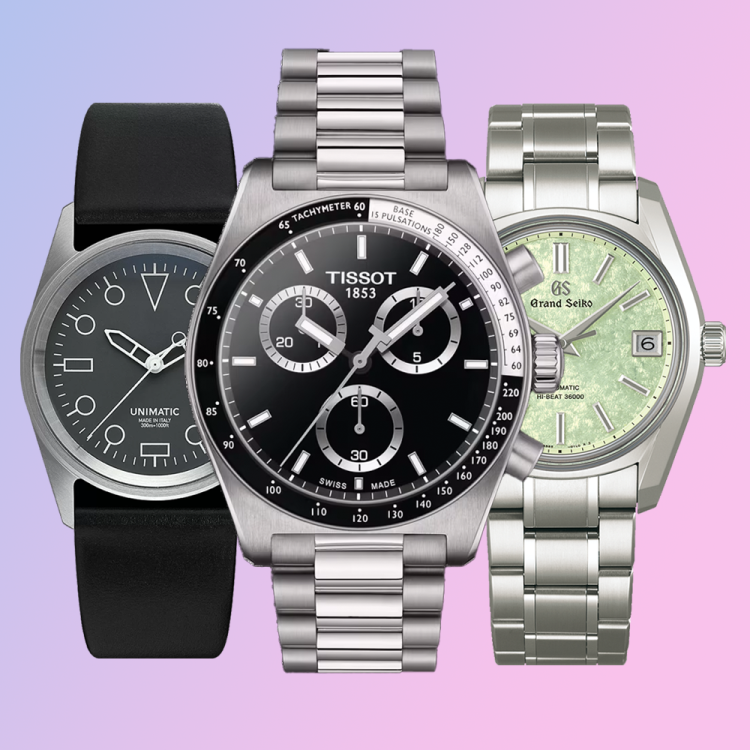I’m going to let you in on a little secret, but you have to promise not to tell anyone, OK? Ready?
…most of us in the watch collecting hobby are poseurs.
Yep — I said it. As verbalized by cinema’s most famous bad dad: “Search your feelings — you know it to be true!” Dive watches, pilot’s watches, racing watches…how many of us actually use these timepieces for their intended purpose? Damn few of us, that’s how many. I myself try to minimize my poseur-ness — I actually dive with my Submariner, and I wear my field watches in the military, and I strap on a thin gold watch with a tuxedo — but if I were ever to buy that Speedmaster I so covet, I know in my heart of hearts that unless I was hauling ass around the track in a 911, or, you know, going to space, I would effectively be playing dress up.
We each have to decide to what extent we’re comfortable with said game of dress up. Some of us flat-out refuse to affect even the aesthetics of something we’re not. (And bravo to those people.) Some of us are flat-out tools. (I try not to hang out with many of those people.) Many of us are somewhere in between. And if any area of watch collecting gives me cognitive dissonance, it’s one of my favorites: that of military watches.
The Best Pilot’s Watches at Every Budget
They’re bold, legible and extremely versatile. And you don’t have to be a pilot to rock one.On the one hand, I don’t think I could wear a dive watch that was once issued to a Navy SEAL. I’m certainly not a Navy SEAL, I probably never would have been a Navy SEAL, and I’m certainly never going to be a Navy SEAL. (Have you ever seen video of BUDs? That shit is bonkers.) On the other hand, I’ve collected and owned various field watches issued to American infantrymen — watches from WWII, Korea, Vietnam. Maybe — and this is personal to me — I feel like I could’ve qualified to wear one of these watches, as I spent some time in a paratrooper brigade. But I digress here. The point is, each person has to make up his or her own mind as to whether one is comfortable strapping on the property of someone who may have worn said watch in combat — or may have made the ultimate sacrifice while in uniform.
Military watches are awesome for a number of reasons:
- They’re built to be utilitarian and functional, and for anyone attracted to such qualities, this design brief often, ironically, results in an inherently attractive aesthetic.
- The previous point, but with actual respect to functionality. These things work, and work well.
- Variety. Military watches have been built for various armies, navies, air forces and more around the world for well over a century now, so the sheer variety is staggering.
- Value. Though prices have crept up on most military watches as we’ve seen the watch collecting hobby explode over the past decade, they’re still well below those of say, complicated watches from the top-tier Swiss marques — or even dress watches from those same brands.
Ultimately, military watches are watches — they’re meant primarily for telling the time, and nostalgically waxing poetic about military history while wearing one is a secondary concern. So whether you’re a watch nerd, a history buff, a military nerd, a veteran, or all (or none!) of the above, it’s time to discuss military watches — what to look for, where to buy from, and some of the best watches to collect. Here we go…
What To Look for in a Military Watch
Military watches come in myriad guises: field watches, dive watches, pilot’s watches, even pocket watches. Some are inherently more expensive — we’re looking at you, Rolex mil-Sub — and some are eminently affordable. (The WWII-era A-11 comes to mind.) What you buy will depend on several factors, such as your budget, how you intend to use your watch, and more. A pocket watch can be a great desk accessory, for example, especially if propped up on a wooden stand for that express purpose. A 20th-century field watch might make a great gift for someone who’s historically inclined, as some of them are quite small by today’s standards. (Think 32mm.) A chronograph or dive watch is a perfectly usable, everyday watch — just be prepared to shell out much more cash for one.
Where to Buy a Military Watch
Can one buy a legitimate vintage military watch from a place like eBay? Sure. But be careful — especially as it concerns vintage watches. The watch community is (perhaps overly) obsessed with “originality” and “correctness” — two distinct concepts, to be sure — and replacing a part in a watch can seriously affect its value, if that sort of thing concerns you. If we’re talking about anything more valuable than a simple field watch from the Vietnam War, it pays, IMHO, to buy through a dealer, such as Analog:Shift or Wind Vintage. These guys can help verify a piece’s legitimacy, as they have both the personal experience handling such watches and the connections at brands to check on details. If you’re buying a seriously valuable piece via an auction house, you can be (reasonably) assured that the house has done its research via the brand in question to verify authenticity. Buying directly from a veteran is, of course, perhaps the ultimate route to legitimacy — especially if said vet can provide pictures of the watch worn during service.
A Quick Note on “Correctness”
Military watches are slightly different than other types of watches in that, given their intended purpose — to aid soldiers in making war — the primary concern of a watchmaker during conflict was to get a piece back into working condition. Any part that would fit the watch and help it to continue doing its job would be fair game, meaning that not every “Frankenwatch” is necessarily “incorrect” with respect to its provenance. For example, an A-11, a watch that was produced in myriad configurations by multiple brands, might have a handset that seems “incorrect” given its particular reference number. But would a watchmaker in 1944 have cared that the parts he or she used to repair any given watch weren’t necessarily meant for that particular watch? Absolutely not. So take “correctness” with a grain of salt.
A Quick Note on Military Watch Pricing
Prices are given as bases to indicate the lowest reasonable price one might expect to pay if searching through an auction site such as eBay. While certain of these watches can be successfully sourced in “correct” condition on eBay, for others, it’s better to pay more money to source one through a dealer or using a dedicated site such as Chrono24 or WatchRecon. Expect to pay more — sometimes multiples more — but to find many more trustworthy sellers.
The Best Military Watches to Collect

G.S./T.P. Pocket Watch
In 1939, the British were caught somewhat with their pants down, and quickly needed to procure a large number of pocket watches for military use. Many of these “General Service, Trade Pattern” watches were purchased from Swiss manufacturers and from retail channels, and thus different dial configurations and specs exist. For the most part, these are black or white-dialed timepieces with Arabic numerals, lumed 5-minute markers, an outer “railroad” minute track, and a large sub-seconds display above 6 o’clock. Casebacks are marked with the “broad arrow” symbol indicating Crown property. Excellent examples from notable marques such as Jaeger-LeCoultre can be found fairly easily, while examples from less prominent brands can be had at a relative bargain.
Type: Pocket watch
Diameter: ~52mm
Lug Width: N/A
Winding: Hand-wound
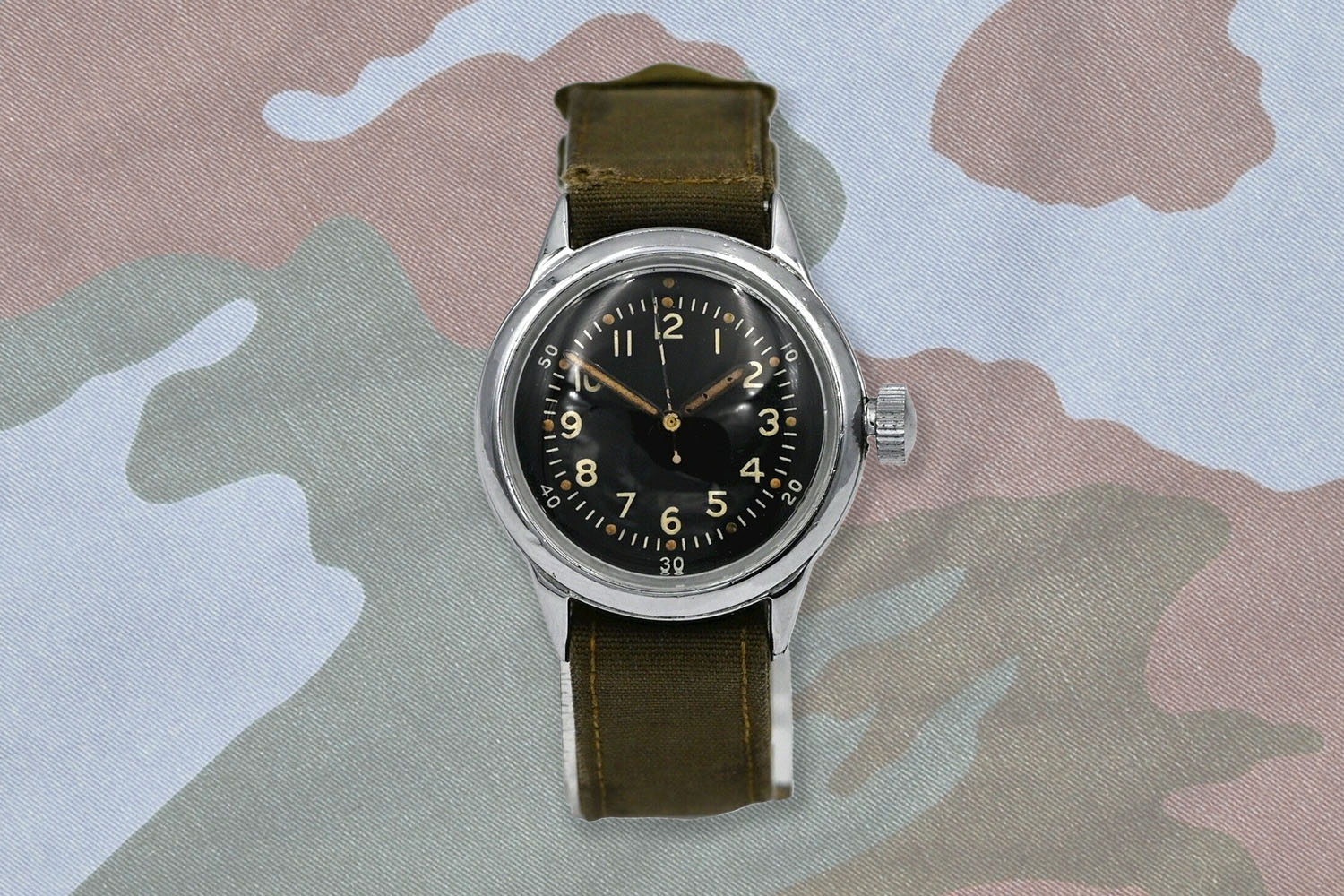
A-11
Deriving from a specification codified in the early 1940s, the A-11 as produced by American companies Waltham and Elgin became “the watch that won the War,” with tens of thousands issued. Because the spec was highly specific in certain regards and less specific in others, there are myriad versions of this diminutive, hand-wound field watch — expect different types of bezels, dials, and even movements. The overall vibe is one of military-influenced simplicity: a simple black (or, in special cases, white) dial with a white minute track, modified sword hands, and, crucially, a hacking movement for precise synchronization between watches. This is a watch that’s still relatively plentiful on eBay for under $500, but do your research to the extent that you can first.
- Type: Field watch
- Diameter: ~32mm
- Lug Width: 16mm
- Winding: Hand-wound
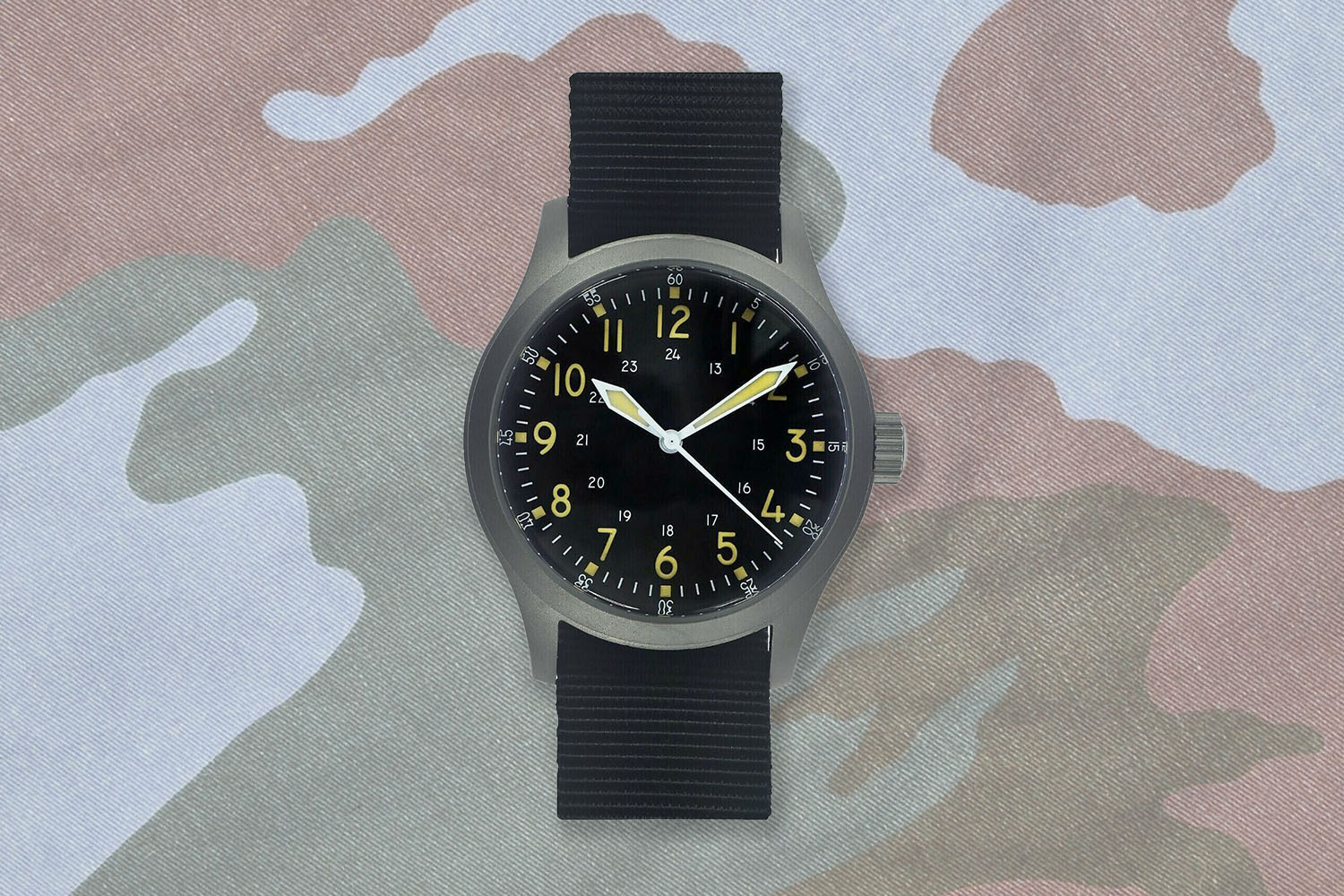
A-17/A17A
Following closely on the heels of the A-11 is a slightly upgraded timepiece called the A-17, along with its successor, the A-17A. This watch, derived from the MIL-W-6433 spec, was born in the 1950s as a pilot’s navigation timepiece. Its dial — which is highly legible despite its small size — features radium-painted Arabic numerals, 5-minute indices, and sword hands, while an inner 24-hour track aids precise military timekeeping. (The coin-edge bezel, which helped in disassembling the watch, also contributes to the piece’s good looks.) The A-17A, which itself derives from an upgraded MIL-W-4633A spec, features a “parkerized” steel case and a syringe handset. Made by Waltham and Bulova, these watches, though small, are affordable, available, and awesome.
- Type: Field watch
- Diameter: ~32mm
- Lug Width: 16mm
- Winding: Hand-wound
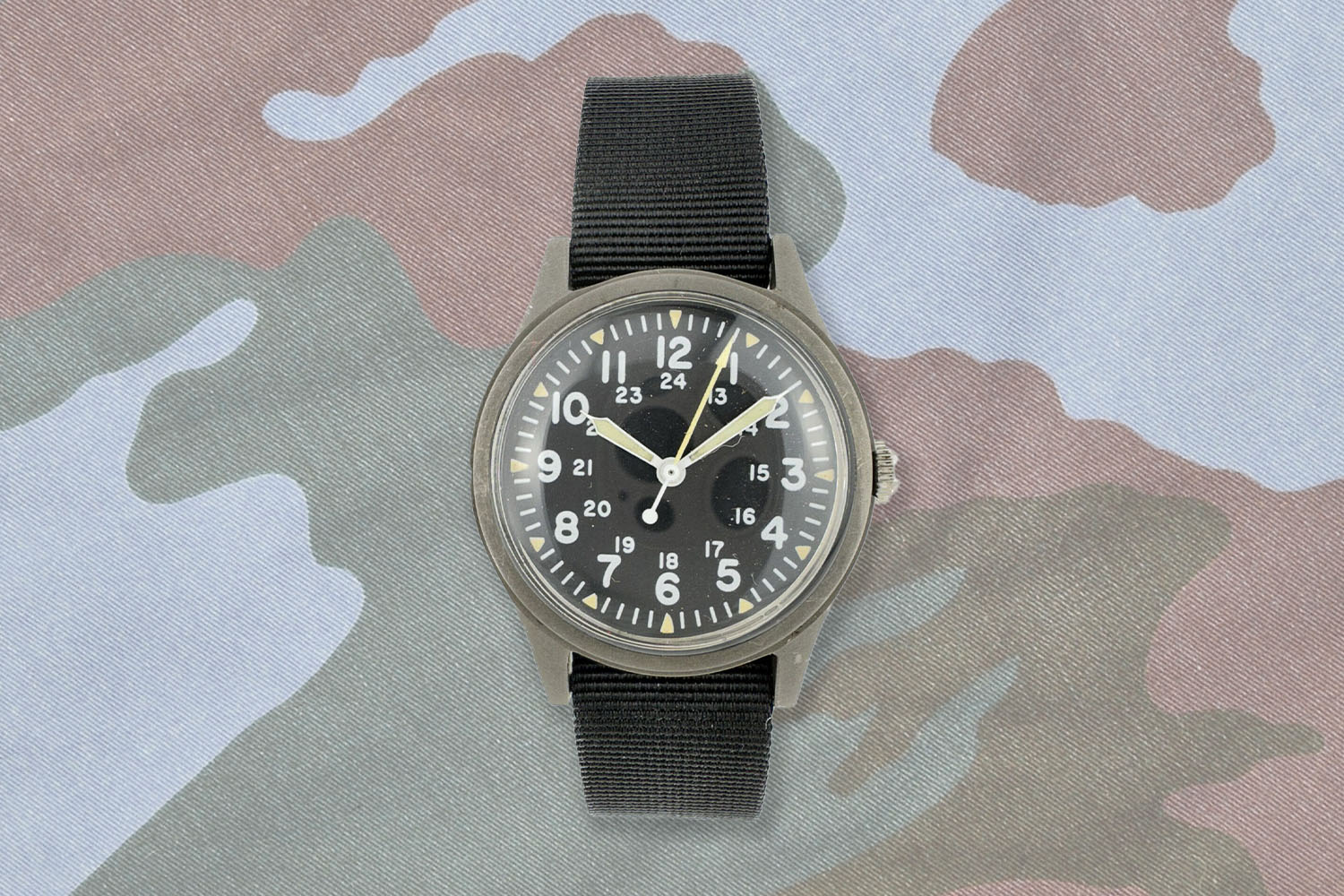
MIL-W-46374/GG-W-113
These Vietnam War-era American military watches are the gateways into military watch collecting for many an enthusiast. Like the A-11, they were produced in numerous iterations, so it pays to do your research to have an idea of what is approximately “correct” for any given reference. These watches derive from the MIL-W-3818B of 1962, which resulted in the DTU-2A/P timepiece, with its 17-jewel, hacking movement. This spec evolved to that of the GG-W-113 in 1967, while a concurrent spec, the MIL-W-46374 specified a very similar watch that was essentially disposable throughout its first several iterations. In all cases, what you’re looking at is essentially a 34mm field watch in a steel or plastic case with a hand-wound movement, a tritium-painted dial, and a movement that was either pretty darn great…or utter shite. For better versions, we recommend the GG-W-113 or, if you can find one, the relatively rare MIL-W-46374D Type 1 from 1988.
- Type: Field watch
- Diameter: ~34mmLug Width: 18mm
- Winding: Hand-wound
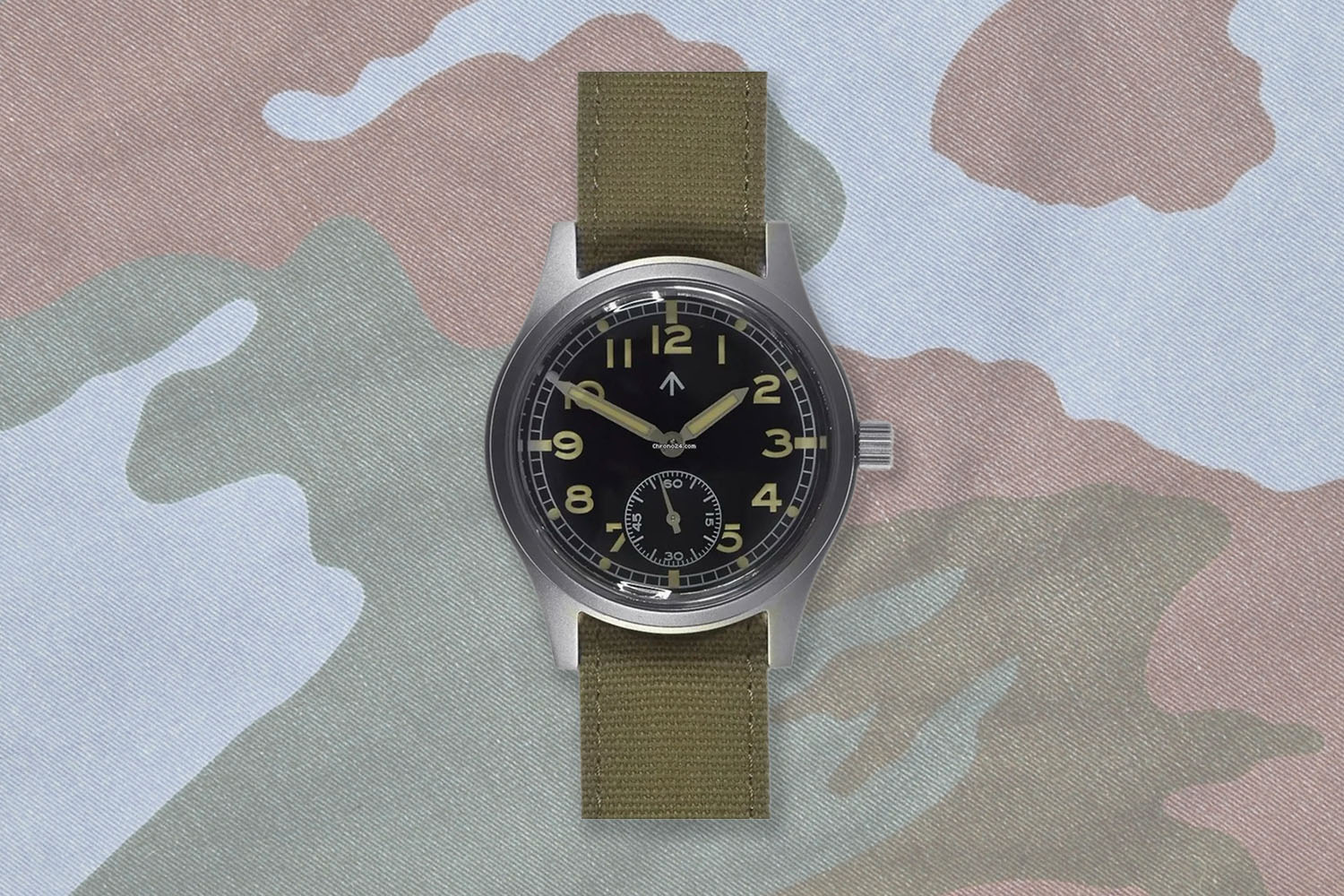
W.W.W. “Dirty Dozen”
Produced at the tail end of World War II by 12 Swiss and British companies for the British military, the “Watch.Wrist.Waterproof.” has today become known colloquially as “The Dirty Dozen,” after the (awesome) film of the same name. Once again, liberties were taken with the basic specification — which called for a watch between 35-38mm in diameter; a black dial with luminous markers; and a chronometer-grade movement of at least 15 jewels — and each company delivered a slightly different timepiece. Overall, roughly 150,000 watches were delivered, with Omega and Record producing the most, at ~25,000 pieces each. However, we’d recommend looking for one from Cyma: at ~37mm wide in a case with a thick bezel and a hardy movement, it’s a beast of a watch, and one that you’d have a hard time believing dates to 1945.
- Type: Field watch
- Diameter: ~35-38mm
- Lug Width: 18mm
- Winding: Hand-wound
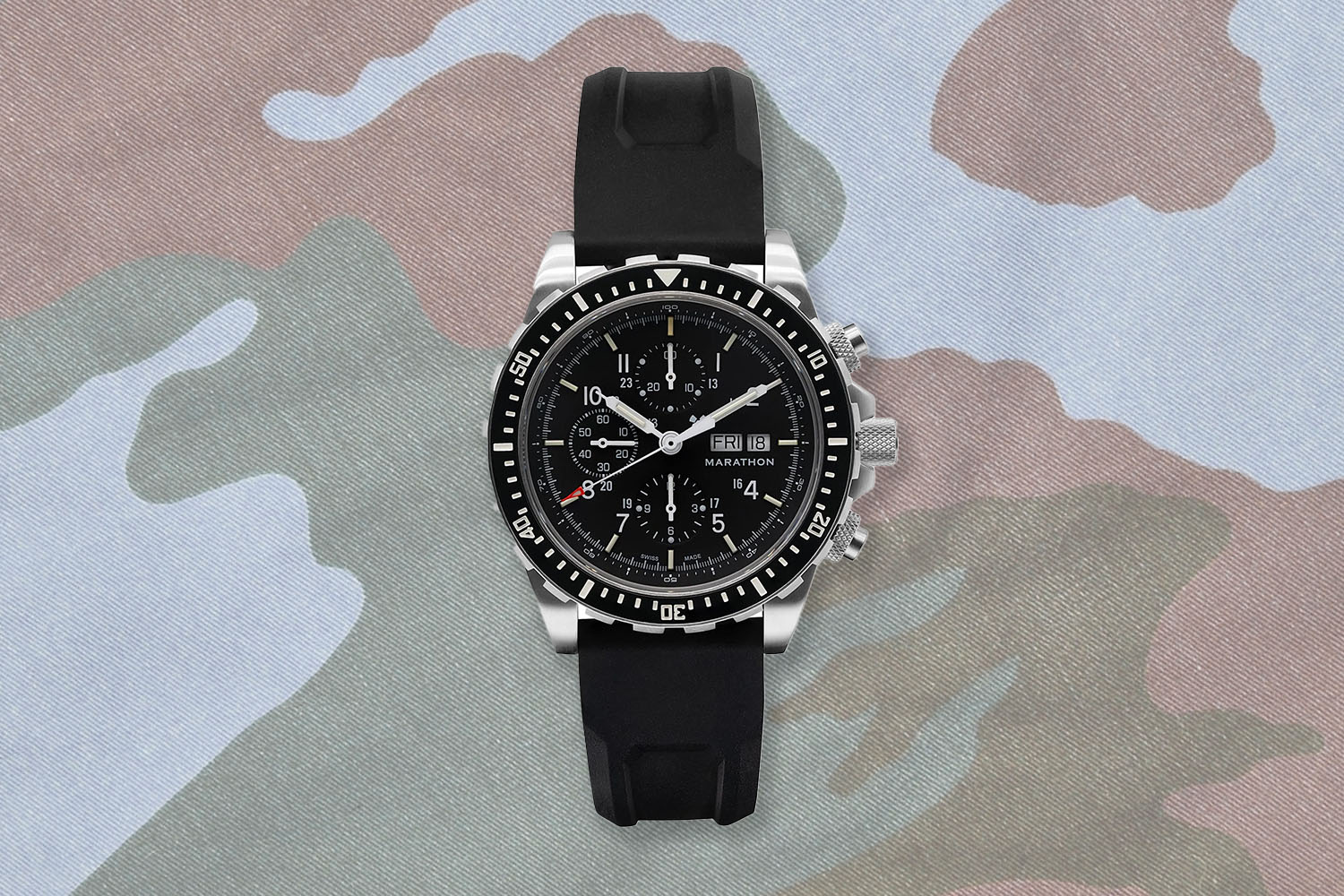
Marathon TSAR/GSAR/MSAR
Here’s an example of a contemporary military dive watch that one could both buy new and as an issued example — if one could convince a serviceman to part with his! Made by Canadian company Marathon, which has been producing mil-spec watches for several generations, the TSAR, GSAR, and MSAR lines constitute a series of robust, automatic and quartz-powered divers that use tritium tubes for the ultimate in luminescent dials. Chunky, handsome, readily available, and approved for use by the U.S. military, these watches have been worn downrange in places like Iraq and Afghanistan for years. There are even special editions with dials signed by various outfits, such as Israel’s YAMAM counter-terror unit.
- Type: Dive watch
- Diameter: 36, 41, 46mm
- Lug Width: 18mm, 20mm, 22mm
- Winding: Quartz, automatic
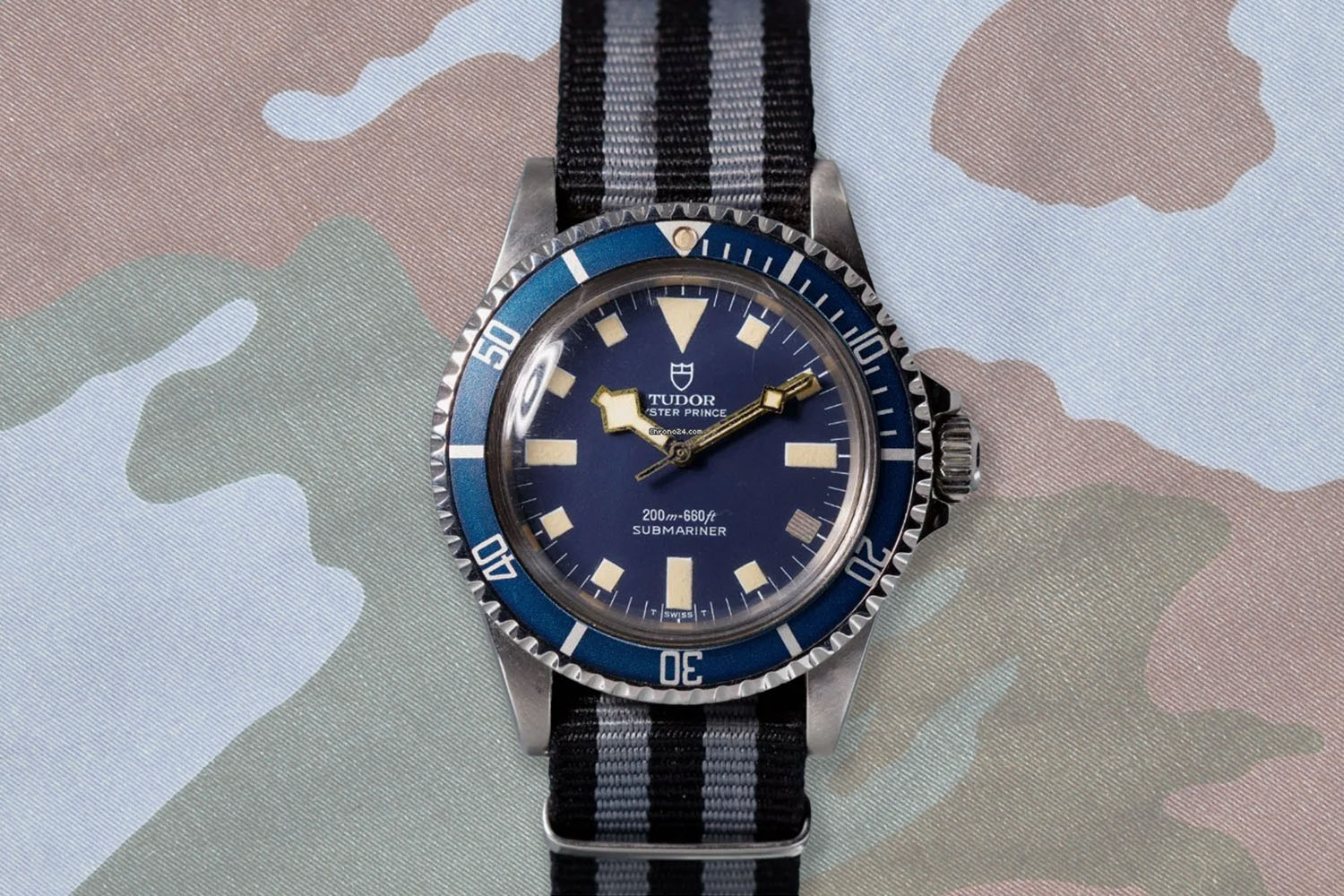
Tudor “Mil-Sub”
Rolex’s sister company has been producing Submariners since the 1950s, and since that time, militaries across the world have been ordering them for issue to their sailors and soldiers. If you’re looking for a Tudor “mil-Sub,” as they’re often called, you should be prepared to spend a pretty penny — at this point, several tens of thousands of dollars, especially for “snowflake” versions. The most popular such issued Tudor watches are to the Marine Nationale, the French navy, with casebacks inscribed “M.N.” But other navies took delivery of Tudor dive watches as well, such as those of South Africa, Israel, and the U.S. (The British, rather famously, used Rolex, Omega, and C.W.C. watches.) While timepieces such as these sometimes come up for sale through conventional channels, you’ll often have to source them through a dealer, or even go through an auction house.
- Type: Dive watch
- Diameter: 39mm
- Lug Width: 20mm
- Winding: Automatic
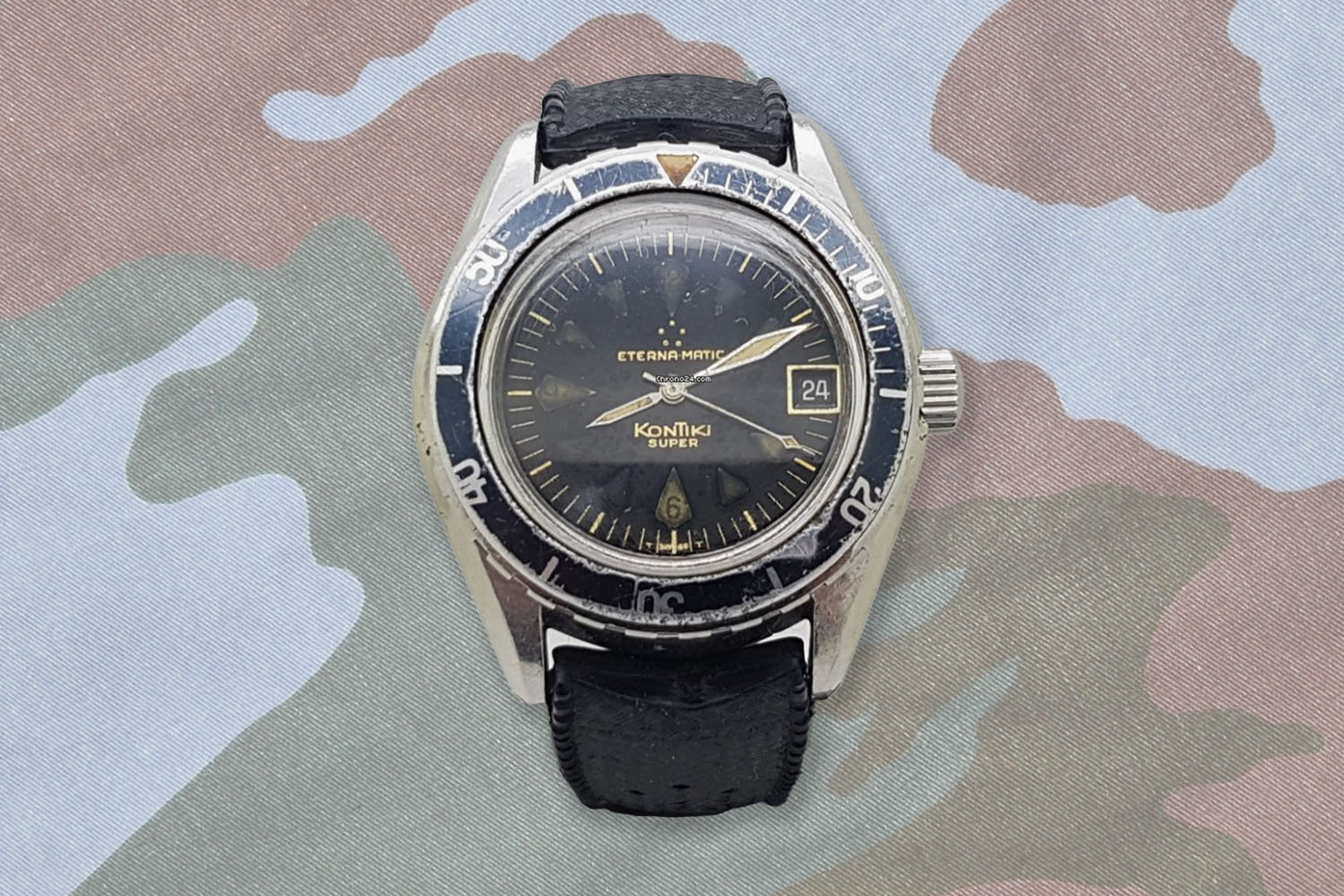
Eterna Kon-Tiki Super
A highly specific dive watch to collect, the Eterna Kon-Tiki Super — in various iterations — was issued to various units within the Israeli Navy. Though it’s commonly assumed that all of these watches were issued to Shayetet 13 — the IDF’s equivalent of the Navy SEALs — “shayetet” means “flotilla,” and there are other “shayetet” units. It’s thought that perhaps those marked only “M” with a numerical designation are S13 watches, as they’re largely “sterile,” and that others with more Hebrew on the caseback were perhaps for submariners and other units. No matter what, be very careful when buying one of these, and try to buy one with good provenance, preferably from the original owner, if that person will part with it!
- Type: Dive watch
- Diameter: 40-41mm
- Lug Width: 20mm
- Winding: Automatic
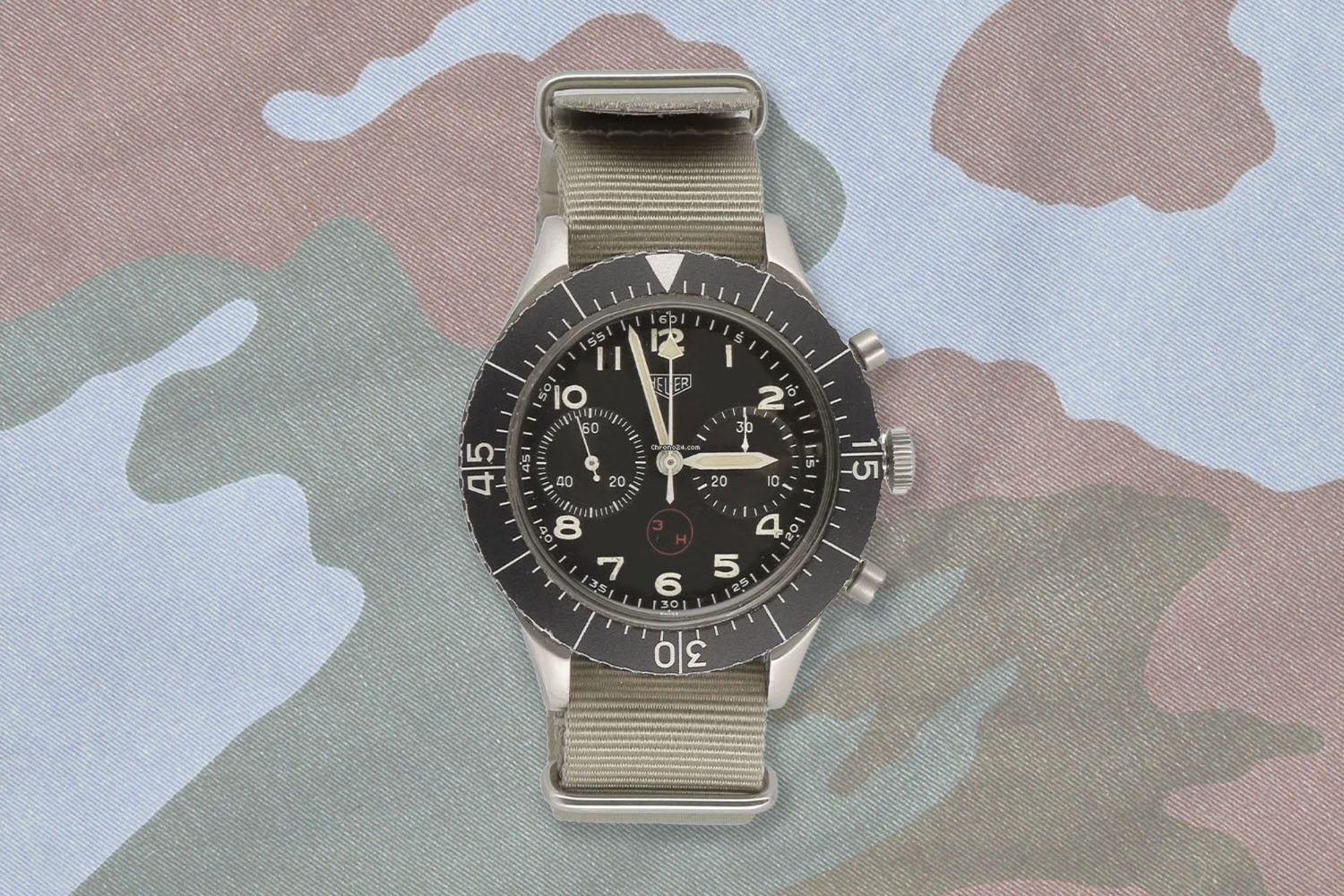
“Bundeswehr” Chronograph
An awesome example of a purpose-built pilot’s watch, the “Bundeswehr” flyback chronographs of the 1970s were made for German pilots by Heuer, Zenith, Leonidas, and others. Though the Heuer 1550 SG is perhaps the most well known, each was essentially the same: specs included a black, luminous dial with a dual-register, flyback chronograph and a rotating timing bezel. Hand-wound movements were furnished by Valjoux, while the oversized, 43mm watches were often paired to two-piece leather straps that have since become known as “Bund” straps. Though many have been repaired over the years, if you can find one with a great, red “3H” on the dial to indicate the presence of tritium, we think you’re getting one of the coolest military watches of the past 50 years.
- Type: Pilot’s watch
- Diameter: 43mm
- Lug Width: 20mm
- Winding: Hand-wound
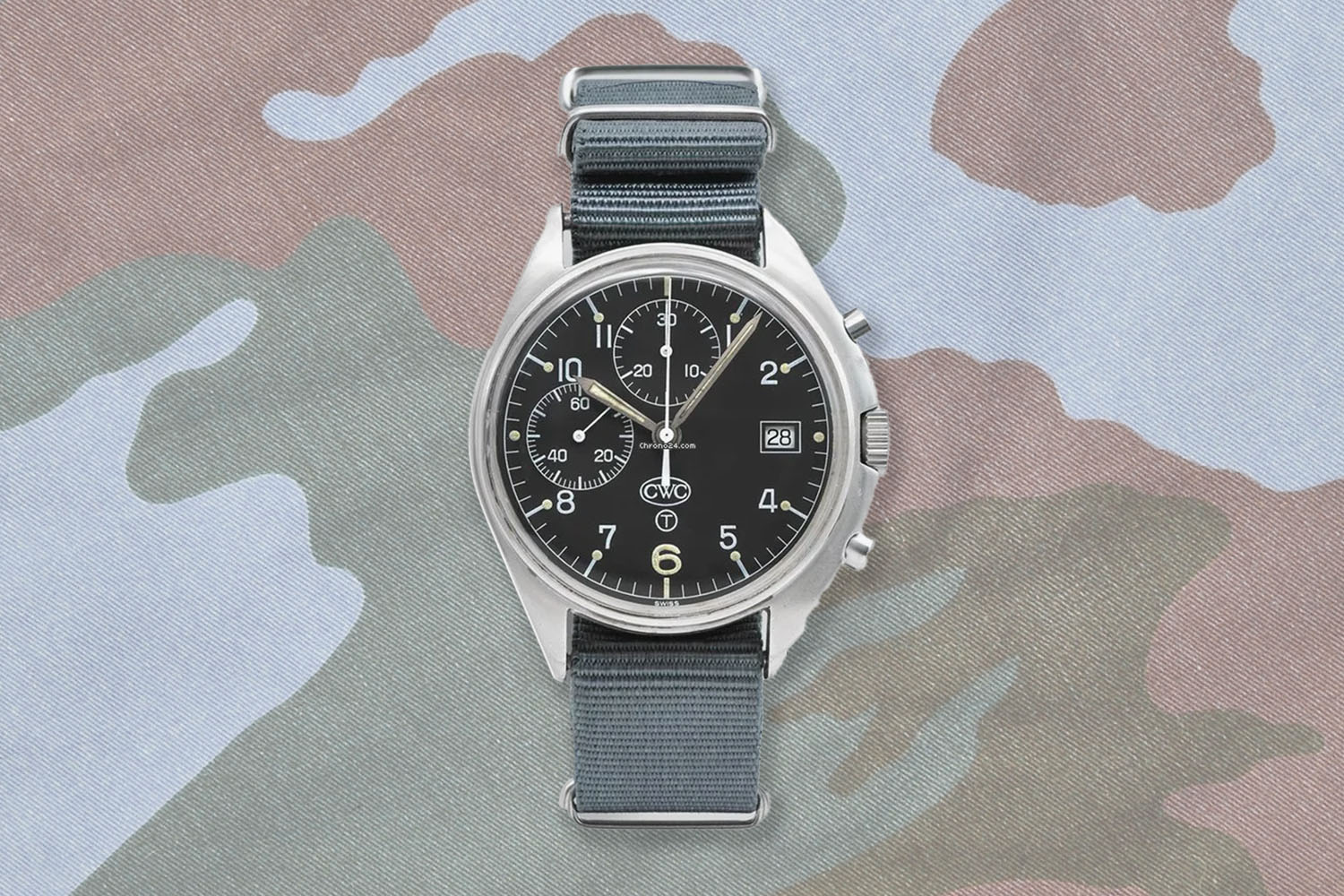
CWC Royal Navy Fleet Air Arm Pilot’s Mechanical Chronograph
Often simply referred to as an “Asymmetric Chronograph” by CWC collectors, this unique, dual-register chrono was issued to Royal Navy pilots in the 1980s. Housed in an asymmetric case with a 30-minute counter beneath 12 o’clock, a running seconds counter at 9 o’clock, tritium lume, an acrylic crystal, and a hand-wound Valjoux movement ticking away inside, its cool looks, comfortable 39mm sizing and inscribed caseback make it a compelling military timepiece. Unfortunately only vintage examples are available, but it seems like only a matter of time before CWC retools this beauty into a contemporary reissue. (There was a time when one could buy a NOS version of this watch directly from CWC for about $900 — alas, those days are long gone.)
- Type: Pilot’s watch
- Diameter: 39mm
- Lug Width: 20mm
- Winding: Hand-wound
This article was featured in the InsideHook newsletter. Sign up now.
